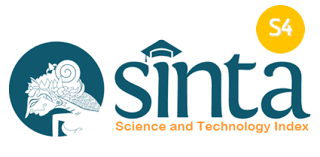An Analysis of Discourse Marker Use in Informal Conversations among Non-Native English-Speaking Students
Abstract
This study investigates the use of discourse markers (DMs) in male and female students’ speech, focusing on their frequency, function, and gender-based variation. It explores how DMs support coherence and fluency in spoken discourse within an educational context. Through a sociolinguistic lens, the study identifies patterns of DM usage and potential linguistic differences between genders in spontaneous speech. A qualitative descriptive approach was employed to transcribe and analyse audio-recorded student conversations. Discourse analysis was used to classify the types and functions of DMs. Findings show that both male and female students used DMs to structure discourse, manage turn-taking, and signal speaker stance. However, female students tended to use a wider range of DMs, particularly those expressing agreement, politeness, and elaboration. In contrast, male students more frequently used DMs associated with hesitation and topic shifts. These results underscore the influence of sociolinguistic factors in DM selection and highlight how gender can shape spoken language patterns.
Keywords: sociolinguistic, discourse markers, spoken discourse, student speech
Full Text:
PDFReferences
Azeez, A. I., Mahmoud, A. H., & Nouri, A. A. (2023). A Multi-Perspective Study of Discourse Markers: An Attempt to Sort out the Muddle among EFL Teachers-Students. EDUCASIA: Jurnal Pendidikan, Pengajaran, Dan Pembelajaran, 8(1), 25–48. https://doi.org/10.21462/educasia.v8i1.136
Coates, J. (2004). Women, Men and Language: A Sociolinguistic Account of Gender Differences in Language. Pearson Education.
Farahani, M. V., & Ghane, Z. (2022). Unpacking the function(s) of discourse markers in academic spoken English: a corpus-based study. The Australian Journal of Language and Literacy, 45(1), 49–70. https://doi.org/10.1007/s44020-022-00005-3
Fraser, B. (2022). Pragmatic markers. Pragmatics. Quarterly Publication of the International Pragmatics Association (IPrA), 167–190. https://doi.org/10.1075/prag.6.2.03fra
Fu, Y. (2024). A Comparative Analysis of the Use of the Discourse Marker “But” in a British Televised Political Interview Show: A Socio-Pragmatic Perspective. Corpus-Based Studies across Humanities. https://doi.org/10.1515/csh-2024-0011
Fung, L., & Carter, R. (2007). Discourse markers and spoken English: Native and learner use in pedagogic settings. Applied Linguistics, 28(3), 410-439.
Gao, Y. (2023). Analyse the Function of Discourse Markers Using in Naturally Occurring Discourses and Planned Speeches. SHS Web of Conferences, 179, 01027. https://doi.org/10.1051/shsconf/202317901027
Haji Mohammed, R. A., & Abbas, A. M. (2023). WRITTEN AND SPOKEN DISCOURSE MARKERS: ATTITUDES OF KURDISH EFL UNIVERSITY INSTRUCTORS. JOURNAL OF LANGUAGE STUDIES, 6(3, 1), 30–51. https://doi.org/10.25130/jls.6.3.1.3
Holmes, J. (1995). Women, Men and Politeness. Longman.
Lakoff, R. (1975). Language and Woman's Place. Harper & Row.
Leuckert, S., & Rüdiger, S. (2021). Discourse markers and world Englishes. World Englishes. https://doi.org/10.1111/weng.12535
Li, wen. (2024). A Study on the Pragmatic Functions of Discourse Marker You Know in The Big Bang Theory. Lecture Notes on Language and Literature, 7(3). https://doi.org/10.23977/langl.2024.070322
Marmorstein, M., & Maschler, Y. (2020). Stance-taking via ya′ani / ya′anu : A discourse marker in a Hebrew-Arabic language contact situation. Language in Society, 49(1), 1–30. https://doi.org/10.1017/S0047404519000654
Rahi, S. (2017). Research Design and Methods: A Systematic Review of Research Paradigms, Sampling Issues and Instruments Development. International Journal of Economics & Management Sciences, 06(02). https://doi.org/10.4172/2162-6359.1000403
Saif Modhish, A. (2012). Use of Discourse Markers in the Composition Writings of Arab EFL Learners. English Language Teaching, 5(5). https://doi.org/10.5539/elt.v5n5p56
Schiffrin, D. (1987). Discourse Markers. Cambridge University Press. https://doi.org/10.1017/CBO9780511611841
Tannen, D. (1990). You Just Don’t Understand: Women and Men in Conversation. William Morrow.
Tonio, J. (2021). Pragmatic functions of discourse marker ‘well’ in selected spoken discourse of Philippine English. International Journal of Language and Literary Studies, 2(3), 189–201. https://doi.org/10.36892/ijlls.v2i3.665
Tottie, G. (2011). Uh and Um as Sociolinguistic Markers in British English. International Journal of Corpus Linguistics, 16(2), 173-197.
Yang, L., & Xie, L. (2014). A Systemic Functional Analysis on Discourse Marker—“Honest Phrases.” International Journal of English Linguistics, 4(6). https://doi.org/10.5539/ijel.v4n6p167
Zufferey, S., & Degand, L. (2017). Annotating the meaning of discourse connectives in multilingual corpora. Corpus Linguistics and Linguistic Theory, 13(2), 399–422. https://doi.org/10.1515/cllt-2013-0022
DOI: http://dx.doi.org/10.30984/jeltis.v5i1.3534
Article Metrics
Abstract view : 86 timesPDF - 37 times
Refbacks
- There are currently no refbacks.






